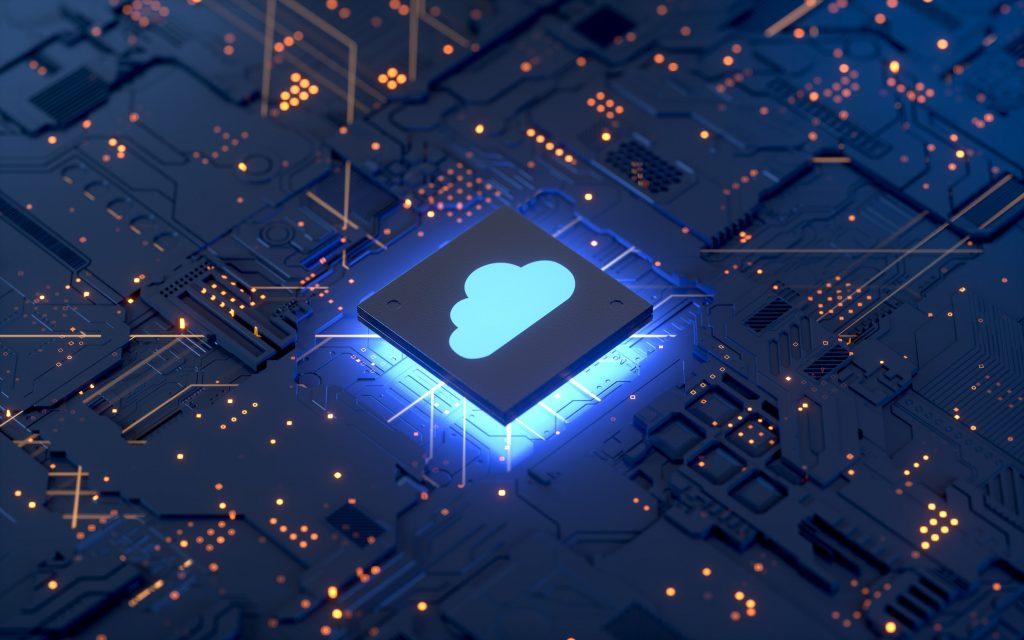Cloud computing technology, sometimes referred to as “the cloud”, is a computer system that manages servers and networks; it is often used for data storage. These data centres can be accessed via the internet from anywhere and are used by organisations to store data or programmes virtually, rather than taking up significant space on local hard drives or servers.

Many businesses use some form of cloud computing technology in the day-to-day running of their operations. But how did this technology start? And where could it be going next? Here’s a look at the history of cloud computing, and how it could evolve in the future.
The History of Cloud Computing
The 1950s – 1990s
The technology started much further back than you might think. It’s not something born in the 21st century as you might imagine, but rather it has its origins all the way back in the 1950s.
Back then, computers were huge machines that were incredibly expensive to buy and maintain, so businesses would likely only own one or two, not one for each employee as is common today. And while the term “cloud computing” wouldn’t appear until the 1990s, the mainframe computers of the 1950s provided the first inklings of the concept, with multiple people able to access this central computer from dummy terminals. This concept of shared computational power is the underlying premise of cloud computing technology as we know it.
During the 1960s, the predecessor to the internet, ARPANET, became a reality for University computers across the US. It was initially designed to be a communication and compute resource sharing tool between science departments of four institutions, but it grew to become the internet we know today.
The 1970s saw the birth of the Virtual Machine, which allowed users to run multiple operating systems from one computer – but instead of accessing multiple desktops from a server, users accessed them from the same machine.
In the 1990s, telecommunication companies began offering virtual private networks (VPN) services. This is where the cloud symbol came into play. It allowed users to share access to the same physical infrastructure with the same quality of service as a dedicated data connection.
It is thought that the cloud as a metaphor for virtualised services dates back to 1994, where it described a universe of “places” that mobile agents in the Telescript environment could go. The cloud symbol was a good way to represent what was going on to non-technical users.
The 2000s
The 21st century saw cloud computing really take off. In 2003, Web 2.0 was born, bringing rich multimedia, user-generated content and dynamic interfaces. Facebook launched in 2004 and is arguably the biggest cloud-photo sharing platform in the world. Today it boasts over a billion users.
In 2006, Amazon launched its Amazon Web Services, making cloud storage and computation resources available to small businesses for the first time. Its site Elastic Compute Cloud allowed individuals to rent virtual computers and use their own computers and applications.
2007 saw the rebirth of Netflix from a postal service to a video-streaming service, which would go on to evolve into the industry leader we know today. Dropbox arrived in 2008 and is still a major player in public cloud storage.

The 2010s
2010 saw tech giants Microsoft, Google and Amazon Web Services launch their cloud divisions, as well as OpenStack, a leading open-source cloud software platform. This cemented the rise of cloud-enabled technologies.
In 2011, public and private clouds merged to create “hybrid cloud”, which combines the security of the private cloud with the ease and accessibility of the public cloud. For example, a business may store sensitive data in house on a private cloud, but interconnect that to a business intelligence application provided on a public cloud as a software service.
That same year, Apple launched iCloud, which allowed people to automatically and wirelessly back up photos, music and videos from their phones.
Cloud technology has developed quickly in the last decade, and the market has experienced explosive growth. Many mainstream services utilise cloud technology, such as Netflix, Facebook, Instagram, Amazon Alexa and Google Drive. The cloud has helped with the multi-device experience and the synchronisation of contents between them.
Cloud Computing Today
Cloud computing use has experienced growth in both consumer and business levels. It is no longer something that companies are told they should be adopting, but rather the very lifeblood that runs through most modern enterprises. As such, pay-as-you-go cloud services have become commonplace, and IT services for businesses are seen as a day-to-day running expense rather than a one-off investment.
The number of cloud-based services is expected to continue to rise in the future, and the hybrid and multi-cloud strategies will play a key role, opening up the potential for efficiency and effectiveness with the central control over the most sensitive and critical data.

Sharing data across the cloud has played a crucial role in making business operations more effective. At GSM, we provide stock control software that can be accessed anywhere by your employees simultaneously. It can be updated in real-time with barcode scanners, aiding error-free stock-taking at all levels. If you’re looking for asset tracking software or barcode labels, contact GSM today.


















